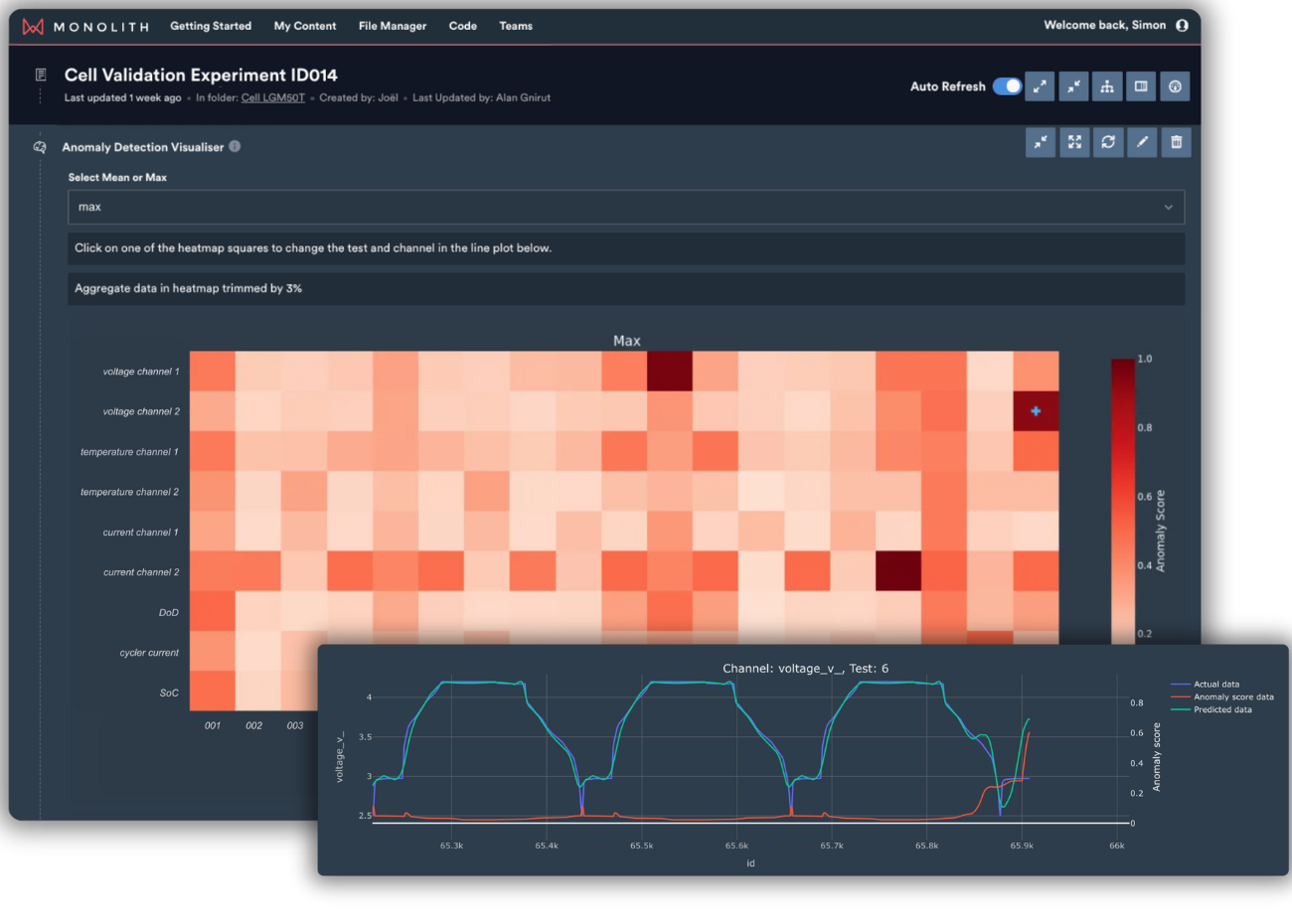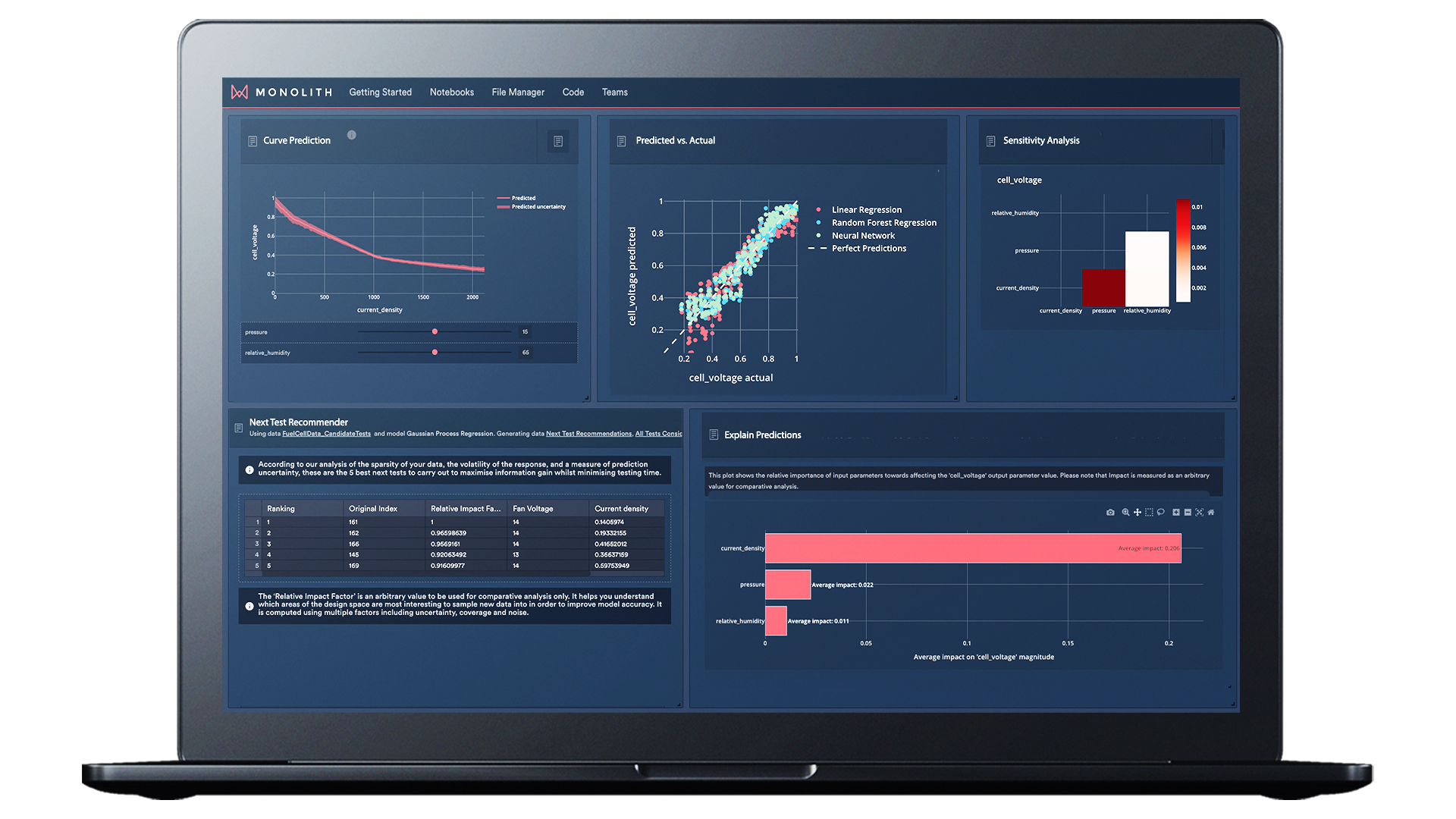
The Test Data Validation module from Monolith uses AI to detect over 90% of known errors in engineering test data within seconds. It identifies anomalies across hundreds of signals, helping engineers eliminate faulty tests, reduce waste, and accelerate validation with greater accuracy and confidence.
Vendor
Monolith AI
Company Website


Test Data Validation
The Test Data Validation module by Monolith is an AI-powered anomaly detection tool designed to help engineers identify and correct errors in complex test data. It rapidly scans hundreds of signals to detect over 90% of known issues, enabling teams to eliminate faulty tests, reduce waste, and accelerate validation workflows. The tool is optimized for high-volume, high-complexity engineering environments such as battery testing, automotive systems, and aerospace validation.
Features
- AI-Guided Anomaly Detection: Proprietary algorithms trained on real-world engineering data detect subtle and complex errors in seconds.
- Multivariate Error Detection: Identifies both single-channel and cross-signal anomalies across hundreds of data streams.
- Interactive Visualisation: Engineers can explore and prioritize anomalies using an intuitive interface.
- Automated Validation: Integrates with test systems to automate the detection process and reduce manual review.
- High Accuracy: Validated to detect more than 90% of known test data errors.
Capabilities
- Real-Time Data Inspection: Quickly analyze large volumes of test data to uncover hidden issues.
- Error Prioritization: Rank anomalies by severity and relevance to streamline corrective actions.
- System Integration: Seamlessly connects with existing test environments and Monolith’s Core Platform.
- Scalable Analysis: Handles gigabytes of data from complex systems like EV batteries or aerospace components.
Benefits
- Faster Validation: Reduces time spent manually reviewing test data, accelerating product development.
- Improved Data Quality: Ensures only clean, reliable data is used for modeling and decision-making.
- Cost Savings: Prevents wasted test runs and resource allocation due to undetected errors.
- Increased Confidence: Engineers can trust their data and focus on innovation rather than troubleshooting.